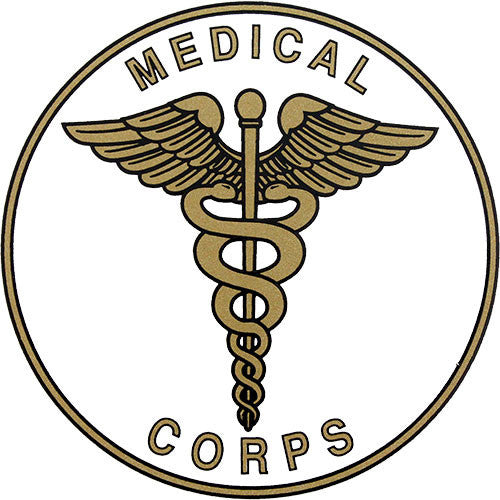The Medical Sleight of hand - History behind the Medical symbol
Today I'm going to tell you an origin story. No, this isn't about some medical superhero (Although that would be incredible!). No, today I'm going to tell you about the origin and evolution of something ubiquitous in the field of medicine. In fact, it's so obvious that it's almost hiding in plain sight.
So what is this mystery object?
It's a rod with two snakes coiled around it with wings on either side. Sound familiar? Think back and I'm sure you'd have walked past this symbol in your daily life atleast once. Your coat, your car, or even your university or hospital logo might have this picture on it. You know it as the symbol of our medical fraternity - something that represents the glory and splendor of the profession.
But what is it? And how did it come to be?
This symbol has a name. It is called a Caduceus and it is the symbol of the Greek god - Hermes, who is the god of trade, thieves, sports and a guide to the underworld. Wait, what? How did the god of thieves and trade come to represent medicine, which is supposed to be pure and ethical?
Lets go back a few years. Okay, actually lets go back a few thousand years. Like all things in western medicine, this story takes place in Europe. Specifically, in ancient Greece.
It's 300 BCE. The sun is coming down on the small Greek village of Epidaurus. All is quiet except for the sounds coming from the only temple in the village. Deep within the ornate walls of the temple, there lies a room filled with beds and the beds are brimming with the sick. But there was something else. On the floor, among the dense foliage of herbs, slithered numerous snakes, long, non-venomous but eerie nevertheless.
That is what the temple of Asclepius looked like. Asclepius was the Greek god of Medicine and the son of Apollo. His temples were the centers of healing and rejuvenation of the ancient world. However, healing at these centers happened very differently from how we see healing happen today. Sick people were not cured by medicines. Instead, they were made to sleep in giant sleeping rooms where the god of medicine came to them in their dreams and gave them the cure for their ailments. And as fantastic as that sounds, the following that these temples had, was incredible.
In ancient writings and in art, Asclepius is always depicted with a staff and a single serpent coiled around it. The serpent, it was believed, aided in the dreams of the patients. This soon came to be known as the symbol of medicine and healing, and was hence remembered by the name: The staff of Asclepius
Like so many ideas and concepts that spread across the world, the staff of Asclepius spread with the Roman empire and became synonymous with healing. The Asclepian snake came to represent the rejuvenation and with it, the field of medicine itself. But wait a second.
When did the symbol change? And how did the new one become so prevalent?
Here's where the story gets a little fuzzy.
In 1902, a single man in a position of authority, recommended that the Caduceus become the symbol of the US marine medical corps. So the Caduceus was sewn onto each of the medical corps' uniforms. Even though at that time, the library of the Surgeon General of the United States pointed out the mistake, there were no attempts made to change it. The authorities reasoned that "the rod represents power, the serpents stand for wisdom and the two wings imply diligence and activity, qualities which are undoubtedly possessed by our Medical officers". So it was accepted and it stayed on.
US ARMY MEDICAL CORPS INSIGNIA

As the digital age came by, the spread of this mistaken symbol was rampant. Some historians claim that voluntary medical organisations like the WHO and the Medical Council of India still use the traditional rod of Asclepius to honor their commitment to the purity of the profession. Meanwhile, some private institutions use the Caduceus to show that commerce is a part of the service they provide. And here we stand today, unknowing of what exactly represents us!
At the end of the day, what matters is not which symbol we choose to rally behind, but the fact that our profession is blessed by the tools of the ancient gods, and that the knowledge and wisdom we hold within us, can change lives.
Author: Narendran Sairam (Facebook)
Sources and citations
Shetty, Anil. "Medical Symbols in Practice: Myths vs Reality." www.ncbi.nlm.nih.gov. Journal of Clinical Diagnosis and Research, 20 Aug. 2014. Web. 26 June 2017.


